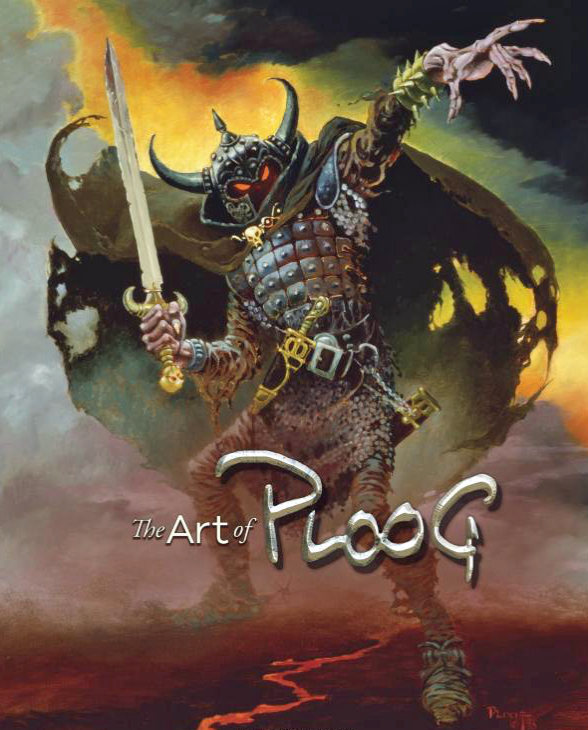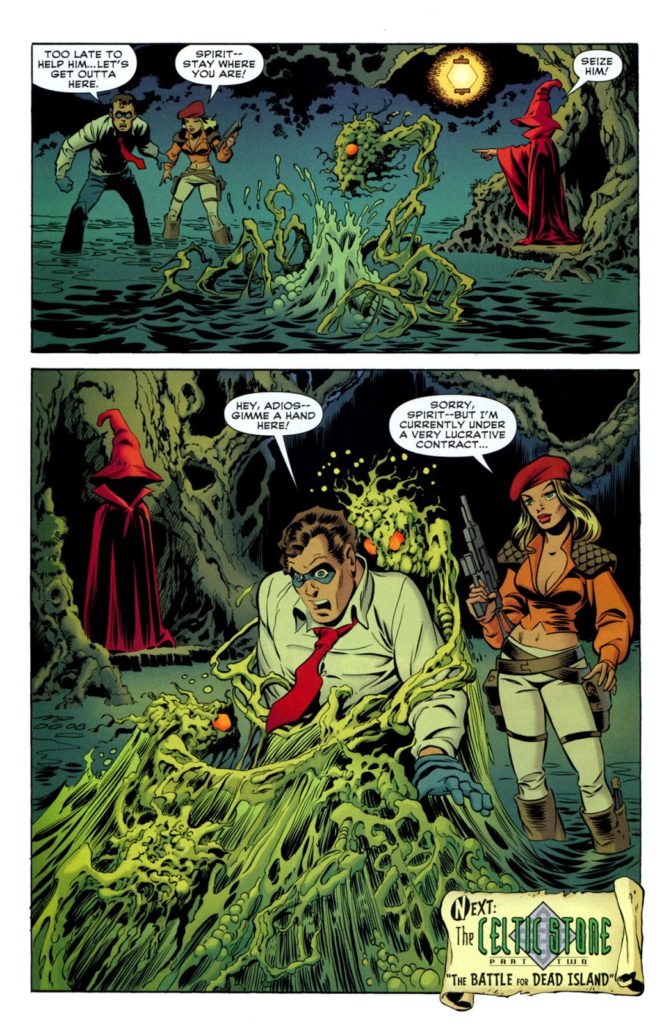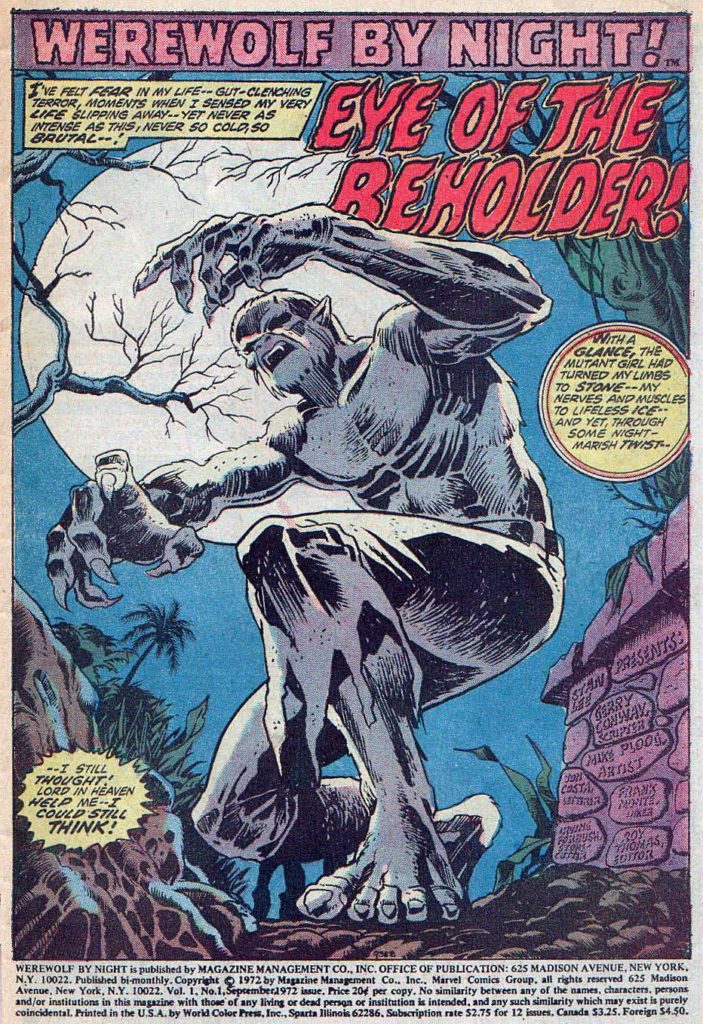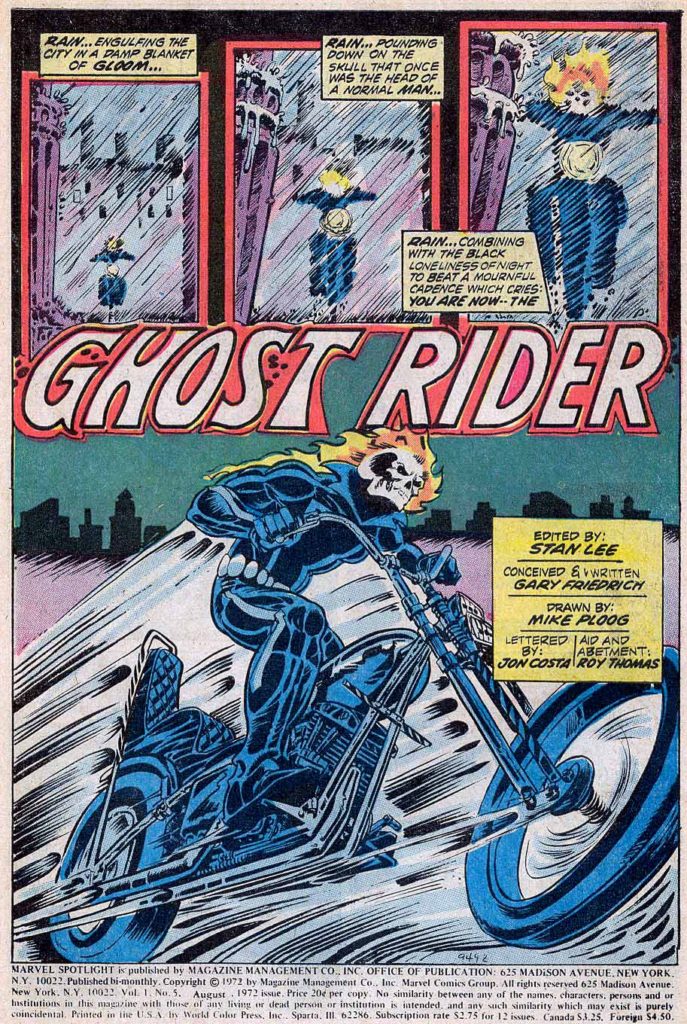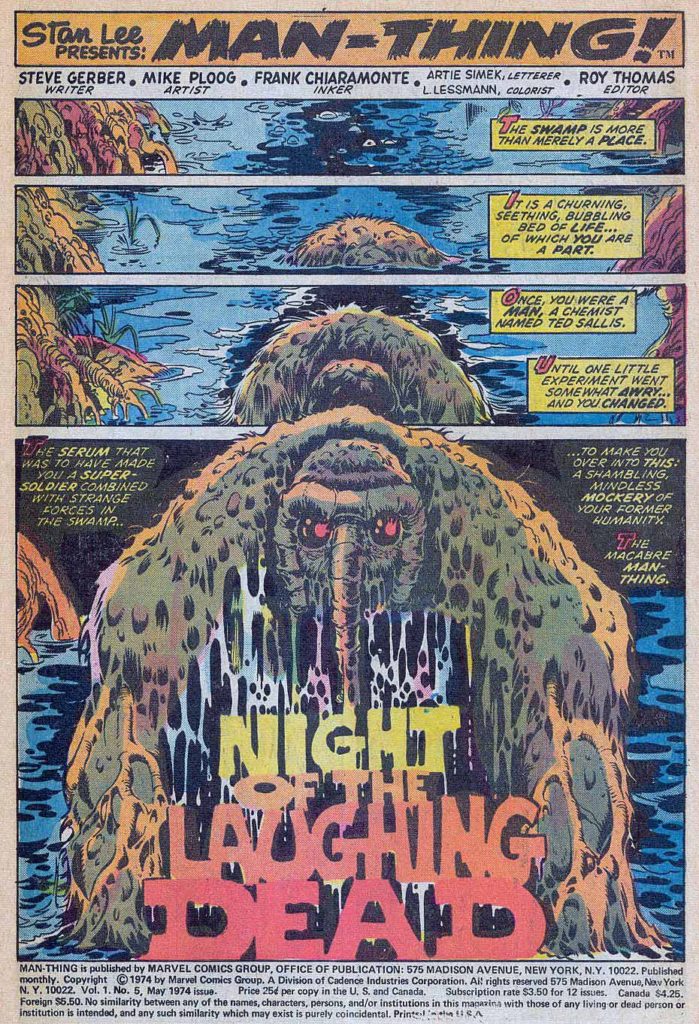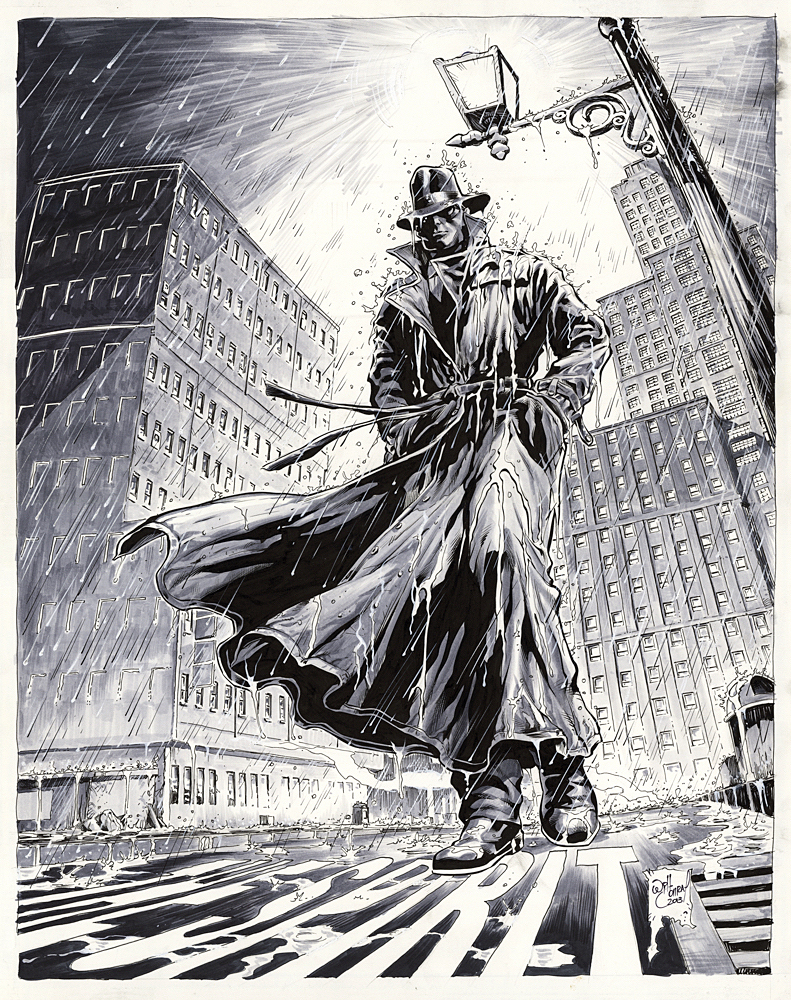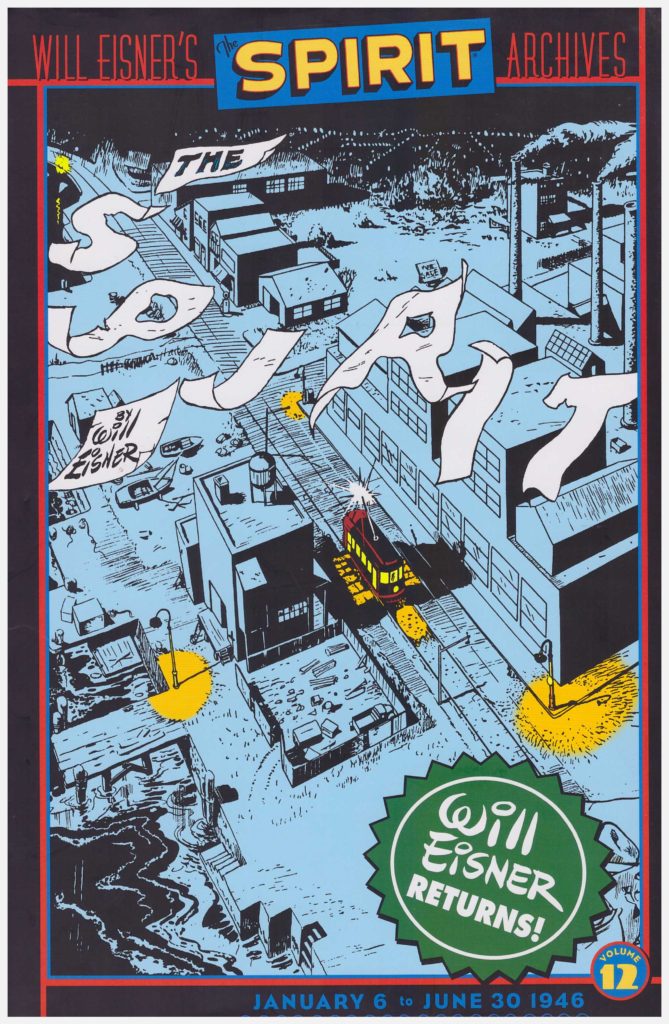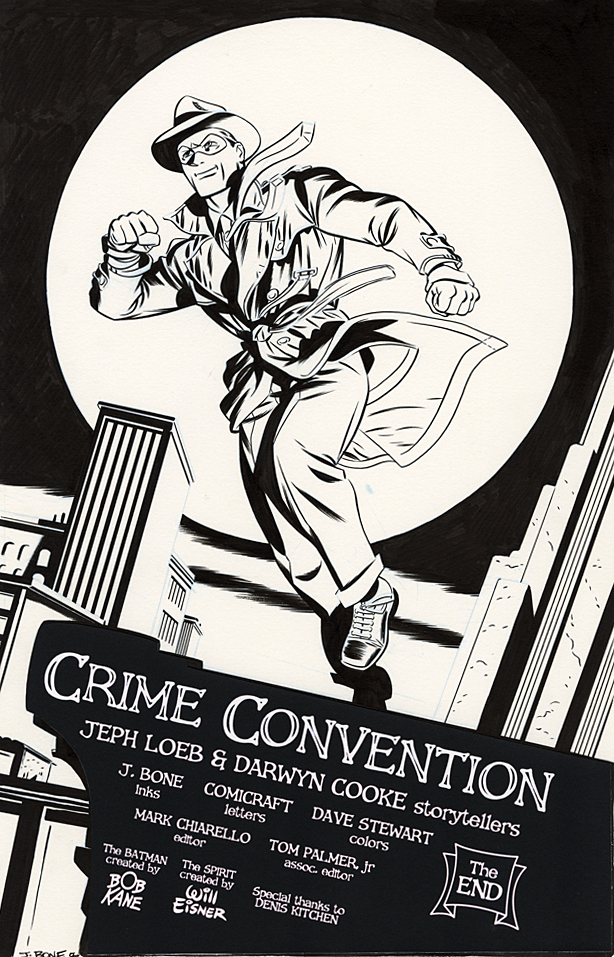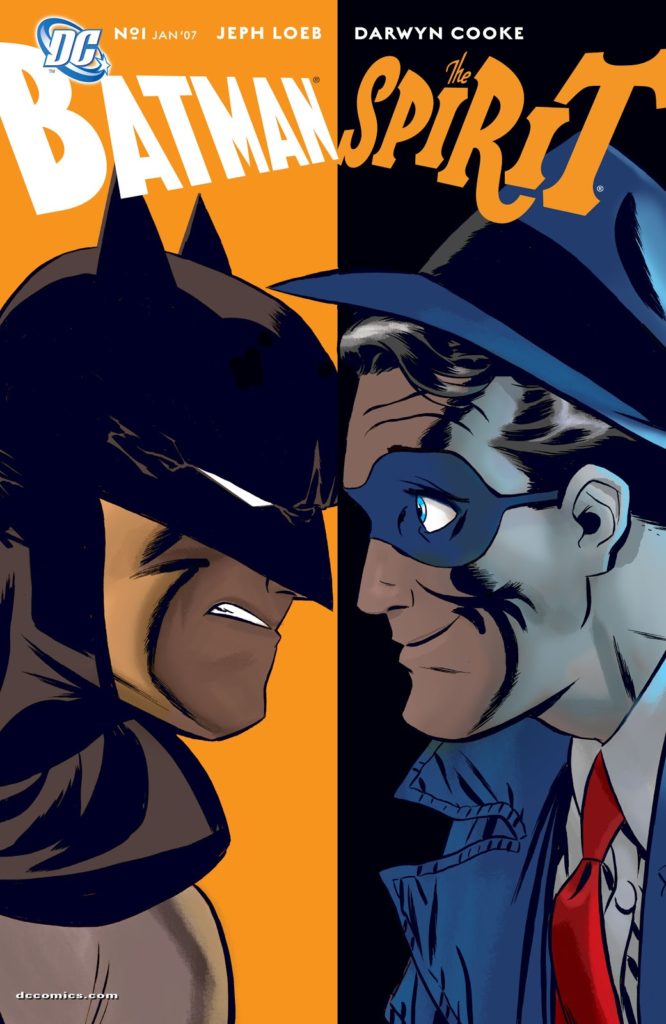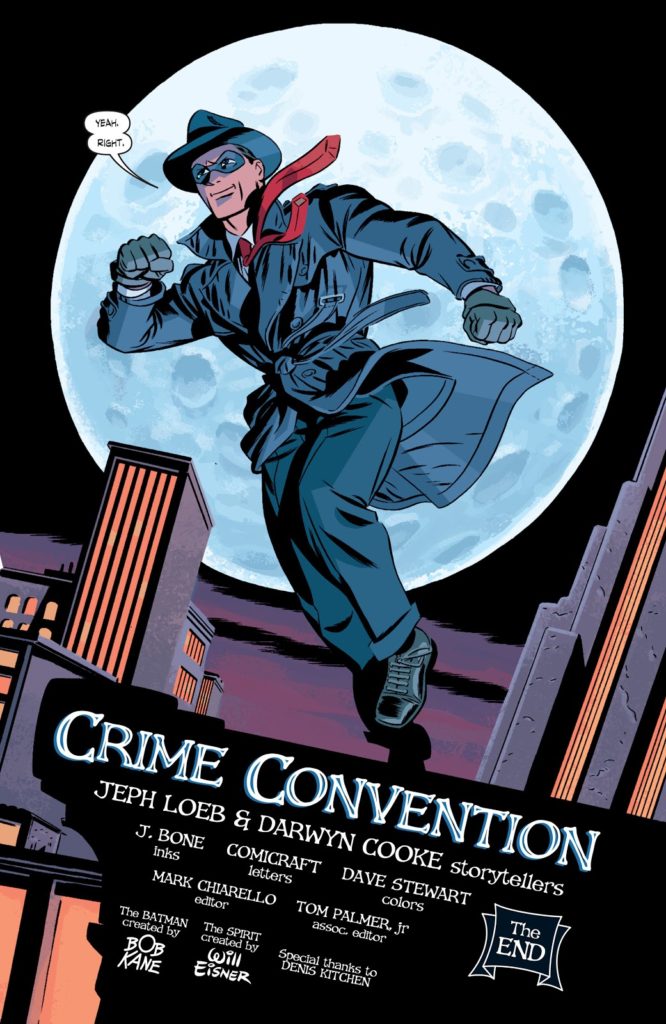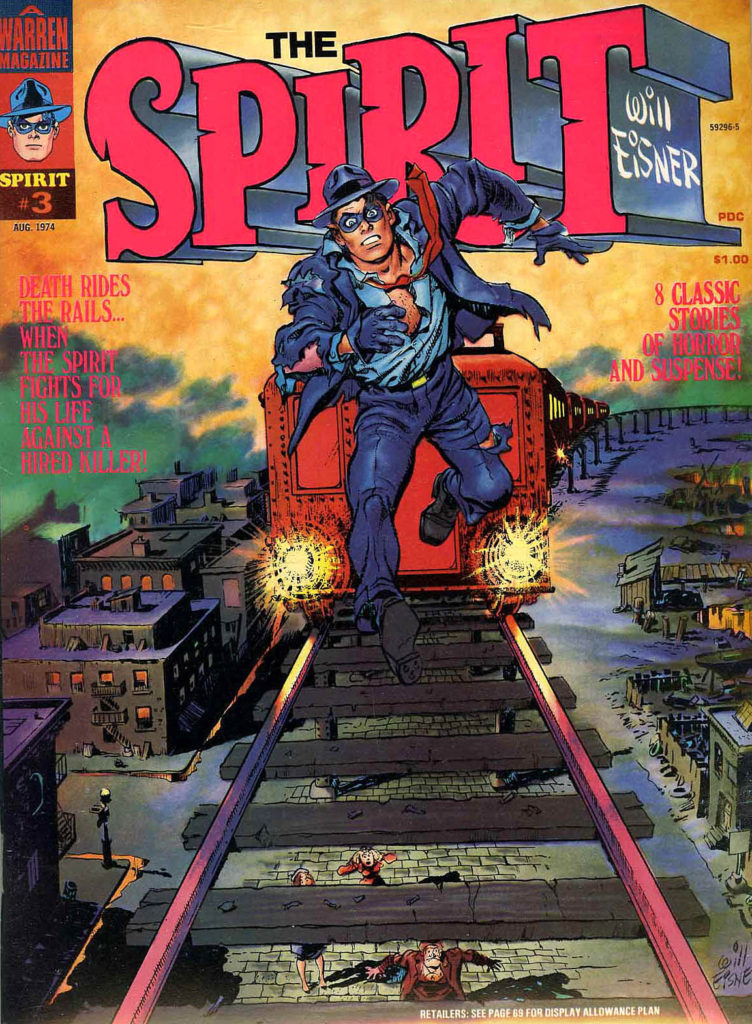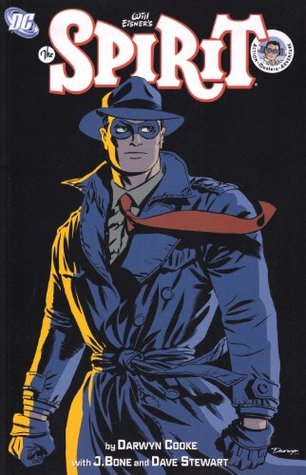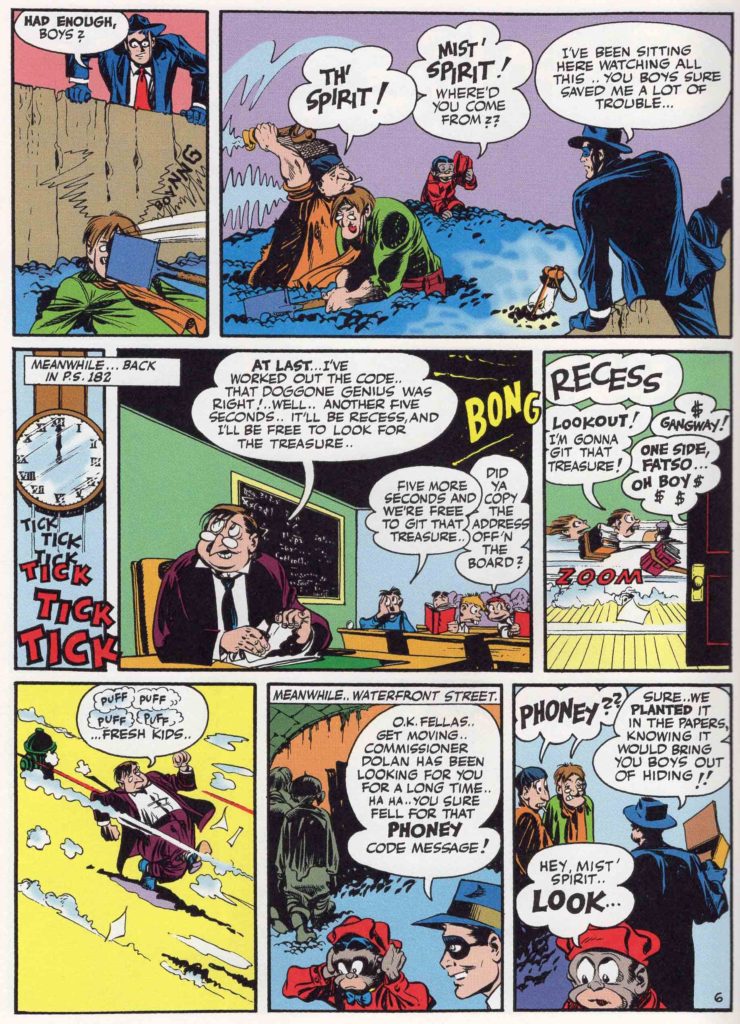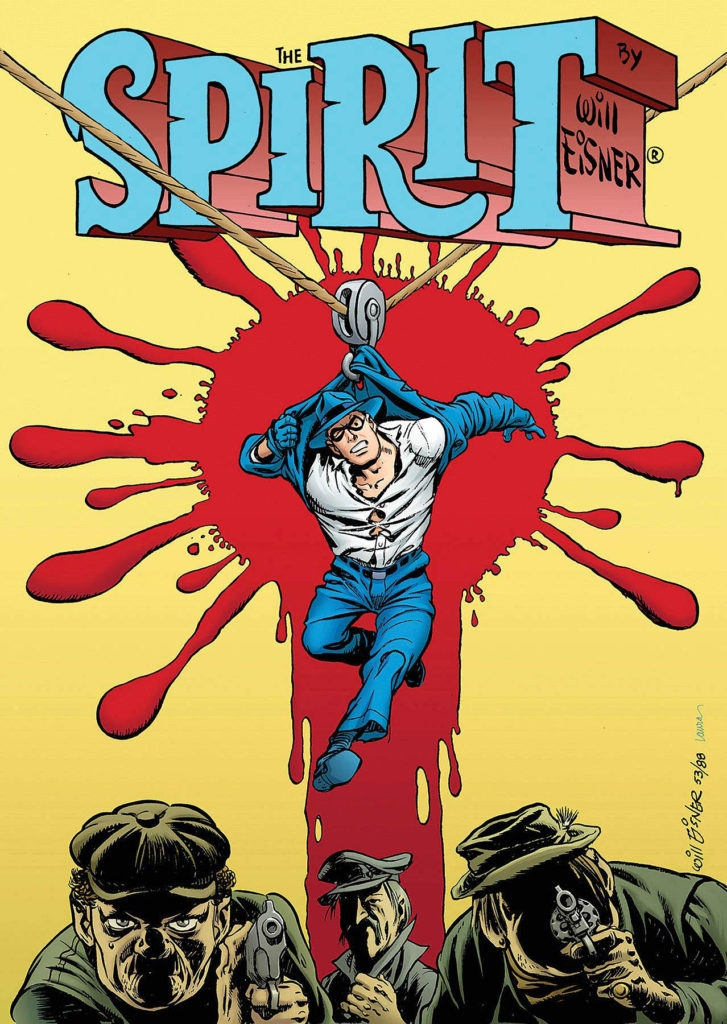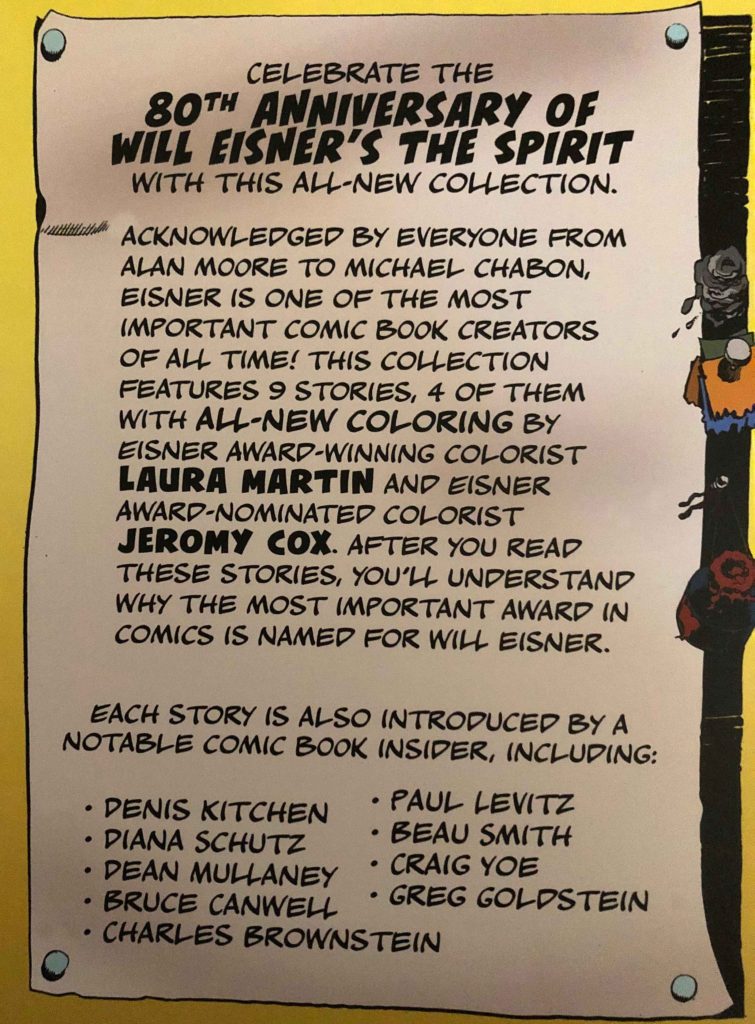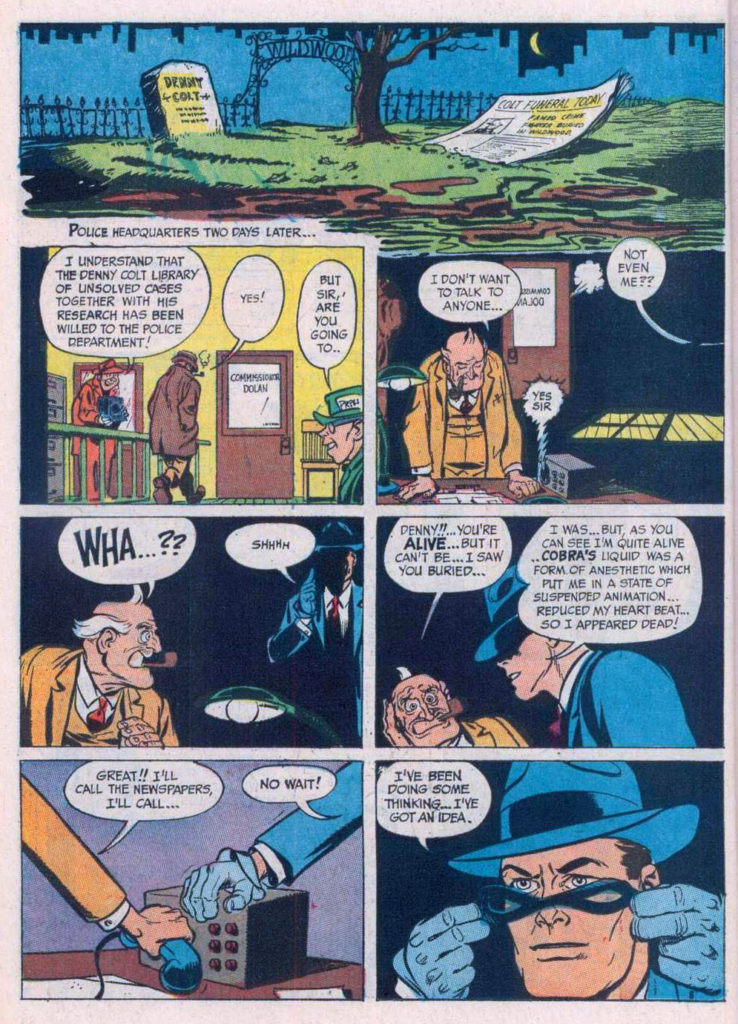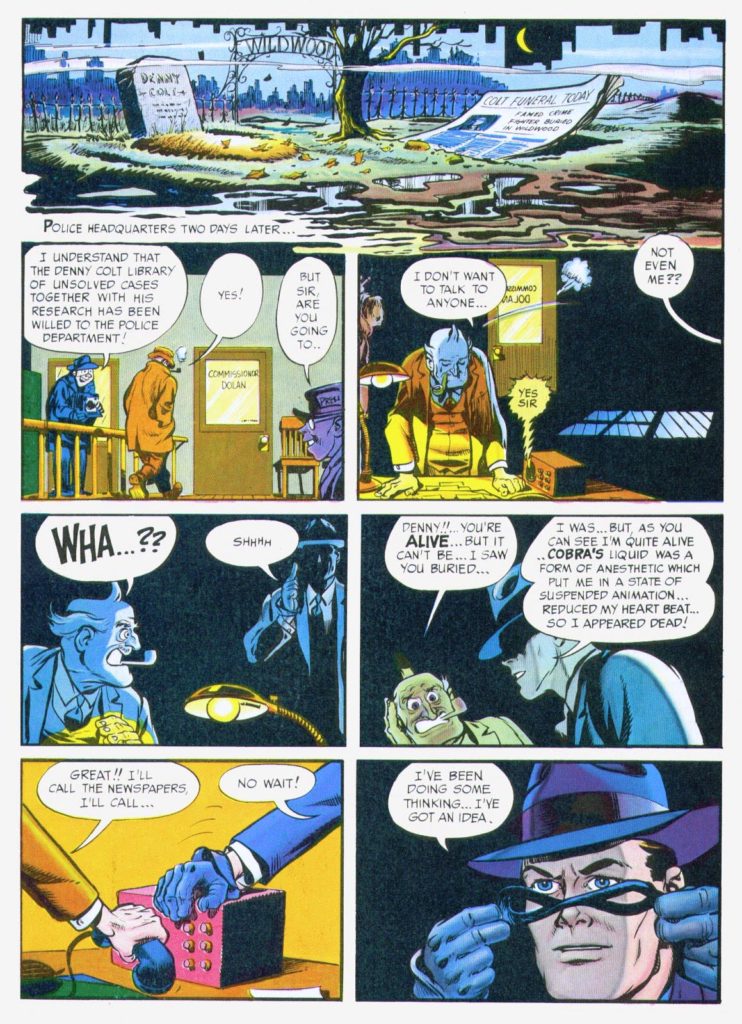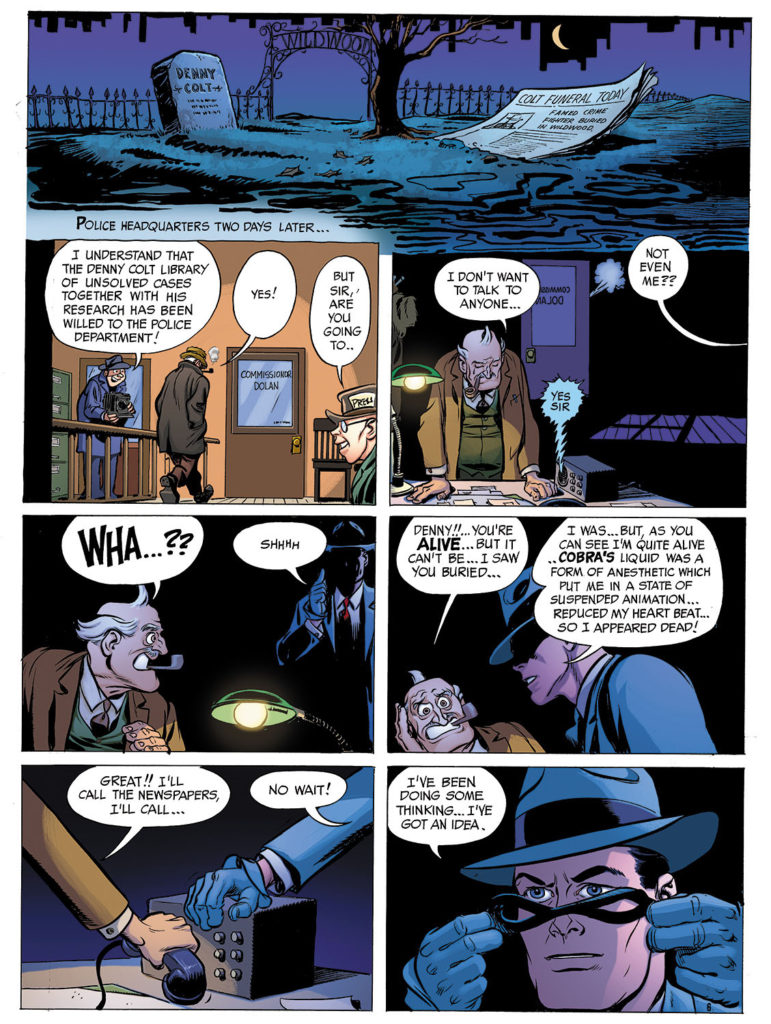Mike Ploog — PS, I Love You
Spirit # 31, September 2009
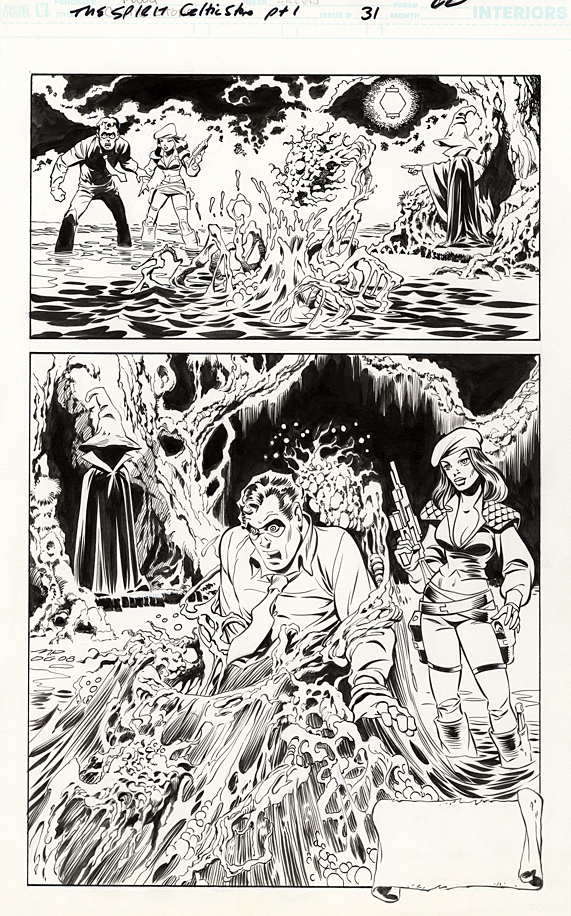
Continuing our celebration of the 80th anniversary of The Spirit, with additional creators’ takes on the beloved and influential character.
Perhaps the artist with the most specific style similarities to Will Eisner is Mike Ploog, who worked for Eisner briefly in the early 1970s, on Eisner’s PS Magazine for the military. Ploog credits his initial Eisner influence on the 10 years he himself spent in the Marines reading and copying the magazine.
Ironically, as a kid, Ploog was not a comic book fan, so he had no idea who Eisner was, or the history of the Spirit.
But that obviously changed as Ploog discovered Eisner, The Spirit and comics’ lore in general. On this page from 2007, Ploog, aided by inks from vet Dan Green, captures Eisner’s Spirit — and adds his own taste for a horrific milieu.
Ploog spoke with journalist Jon B. Cooke about the early part of his career in an interview for Comic Book Artist #2 in 1998. Read the full interview here.
CBA: How’d you get the call from Will?
Ploog: I was working for Hanna-Barbera, and the guy in the room with me belonged to the National Cartoonist’s Society. He got a flyer Will had put out, looking for an assistant. He looked at it and said, “Ploog, this looks like your stuff.” I looked at it and said, “It is my stuff.” [laughter]. I called Will, and two days later he was in L.A. and interviewed me…the following week I went to work for him.
CBA: When you first burst upon the scene in comic books, you had a style very reminiscent of Will’s work. Did you start developing that style through osmosis, just being around him?
Ploog: It was very difficult for me, because I hadn’t done that much work. I really didn’t know what a “style” meant. When Will saw my work, he said, “This guy can adapt to what I’m doing easily.” Obviously whatever I had, it was adaptable to him. I could emulate Will right down to a pinpoint on an occasion…I’m sure from working with Will, it developed in that direction…
I love Will; he’s a dear, dear old friend. He’s been an enormous influence on my work both in comics and film.
-Mike Ploog, 1998
